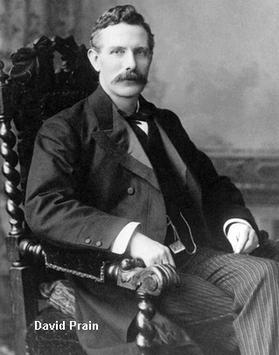David Prain facts for kids
Quick facts for kids
Sir
David Prain
|
|
|---|---|
 |
|
| Born | 11 July 1857 Fettercairn, Scotland
|
| Died | 16 March 1944 (aged 86) Whyteleafe, England
|
| Nationality | Scottish |
| Education | Aberdeen Grammar School |
| Alma mater | University of Edinburgh |
| Scientific career | |
| Fields | Botany |
Sir David Prain (born July 11, 1857 – died March 16, 1944) was an important Scottish botanist. He spent many years working in India at the Calcutta Botanical Garden. Later, he became the Director of the famous Royal Botanic Gardens, Kew in England.
Contents
Early Life and Education
David Prain was born in 1857 in Fettercairn, Scotland. His father, also named David Prain, was a saddler. David went to school in Fettercairn and then to Aberdeen Grammar School.
He studied medicine at the University of Aberdeen, earning his M.A. degree in 1878. He later continued his medical studies at the University of Edinburgh. In 1883, he received his MB ChM degree with top honors.
Career in Botany
In 1884, David Prain moved to India. He joined the Indian Medical Service as a doctor and botanist. Botany is the study of plants.
In 1887, he became the curator of the Calcutta herbarium. A herbarium is a collection of dried plants used for scientific study.
Leading Botanical Gardens
Prain's career grew quickly. In 1898, he became the Director of the Royal Botanic Garden, Calcutta. He also led the Botanical Survey of India. This survey helps to find and record different plants across India. He stayed in these roles until 1905.
From 1898 to 1905, he was also a Professor of Botany at the Medical College of Calcutta.
In 1905, Prain returned to England. He was appointed Director of the Royal Botanic Gardens, Kew. Kew Gardens is one of the most famous botanical gardens in the world. He held this important position until 1922.
Challenges at Kew Gardens
During his time at Kew, David Prain faced a big challenge. This was a disagreement with some of the garden staff. It involved temporary workers who felt they were not treated fairly.
Prain understood their concerns. He worked hard to find new jobs for the affected workers. This showed that he was a very fair and honorable person.
One interesting story involves a gardener named William Purdom. Purdom was a strong voice for the workers. Even though they had disagreements, Prain saw Purdom's talent. He later recommended Purdom for an important plant collecting trip to China. This shows Prain's dedication to botany and his fair nature.
Honors and Awards
David Prain received many honors for his work. In 1905, he became a Fellow of the Royal Society. This is a very high honor for scientists in the UK.
In 1906, King Edward VII made him a Commander of the Order of the Indian Empire. In 1912, King George V knighted him, giving him the title "Sir."
He also received honorary doctorates and became a member of important scientific groups. These included the Royal Swedish Academy of Sciences. He was president of the Linnean Society from 1916 to 1919.
Plants Named After Him
Two types of flowering plants were named in David Prain's honor.
- In 1888, the plant Prainea was named after him.
- Later, in 2019, another plant called Daprainia was also named to remember his contributions.
Family Life
In 1887, David Prain married Margaret Caird Thomson. They had one son, Theodore Prain. Sadly, Theodore died in 1914 during the early days of the First World War. He was serving as a lieutenant in the Leicestershire Regiment.

